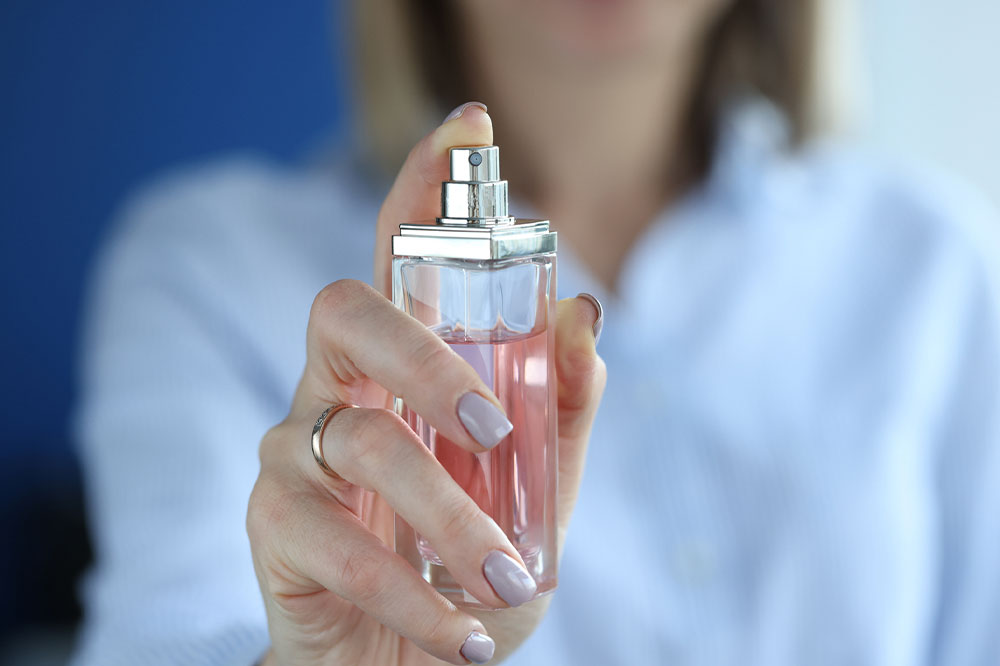
5 strong odors that trigger migraine headaches
Migraines cause a throbbing or pulsing sensation in the head. The causes of such a condition can vary from one person to another. One of the most common triggers of migraine headaches is strong smells or odors. These triggers are so prevalent in our surroundings that we are not fully aware of them. So, identifying and avoiding exposure to triggers is important for migraine patients. Here are five strong odorants that can trigger migraine headaches:
Perfumes
Perfumes can be a leading agent that triggers headaches for those who are sensitive to odor. A condition called osmophobia, which is the fear or aversion to smell or odor, can be common for people with migraine. Those with osmophobia and migraine are likely to avoid perfumes because of their strong odor, which can cause irritability and lead to headaches. Scientists believe a couple of reasons why the scent of perfume leads to migraine. These factors include but are not limited to odors causing blood vessels to swell and stimulate headache, fragrance sensitivity to certain odors, or the presence of chemical substances that trigger migraine.
Paints
Commonly available spray paints, paint thinners, and oil-based paint at work bring the chances of migraine. The reason is their strong odor. Breathing the fumes of solvent paints in a poorly ventilated space or for a prolonged period can lead to numerous health issues like migraines. Instead of choosing oil-based paints and other paints with a strong odor, people with migraine and osmophobia can opt for water-based paints (latex paints) that produce fewer odors.
Cleaning products
Home-based cleaning products that include bathroom cleaners, kitchen cleaners, detergents, disinfectants, and bleach may release toxic smells that are migraine triggers. Cleaning products usually contain volatile organic compound gases that may lead to various health effects when released. When a person is cleaning a room with closed or no windows or a closed space, the chemical toxins in the cleaning products can spread and promote headaches.
Smoke
Smoke from campfires, car exhaust, and combustion of gas can be common odor triggers of migraine. Pollutants present in wood can be a major factor that causes headaches associated with odor from campfires and chimneys. The burning of fuels leads to the release of carbon monoxide, which can trigger migraine.
Gasoline
Gasoline has a strong odor that triggers headaches and migraines, especially in those who work at gas stations. Breathing gasoline vapors can trigger irritations in the nose, throat, and head. Chemicals like benzene, toluene, ethyl-benzene, and xylene in gasoline cause adverse health effects.
Treatment plans
The most important way to deal with migraine is to become aware of the triggers, avoid them accordingly, and choose the right treatment plans. There are many different options for treating migraine headaches. The most common prescriptions are discussed below:
Nurtec
Nurtec (or Nurtec ODT) is a treatment plan that works quickly to prevent migraines and provide relief during migraine attacks. For best results, it is taken soon as migraine strikes. Nurtec helps stop the pain and other symptoms of migraine, including light sensitivity, sound sensitivity, and nausea. It works by blocking the CGRP receptors in the brain (receptors that help in cell communication and responses such as pain) from being activated, so that migraine can be prevented. The recommended dosage is normally up to 75mg once daily. Be sure not to take more than one tablet of Nurtec ODT in a 24-hour period. During a migraine attack, Nurtec can stop blood vessel swelling, pain signals, and the inflammation that occurs in the brain. The common side effects of Nurtec are stomach pain, nausea, and indigestion.
Ubrelvy
Ubrevly (Ubrogepant) is a prescribed treatment for dealing with migraine attacks in adults. It can be taken orally during a migraine attack. Ubrevly works by directly blocking the CGRP proteins that lead to migraines. This action prevents CGRP from affecting the brain and reduces migraine symptoms such as headache, light or sound sensitivity, and nausea. Ubrevly can be taken whenever and wherever you need it. This treatment plan is used to deal with migraine attacks and reduce symptoms and not to prevent migraine. Clinical studies have shown that people who took UBRELVY within 4 hours of a migraine attack got relief from pain. However, it is recommended that a doctor’s instructions be followed for the right dosage. Ubrelvy is commonly available in two strengths: 50 milligrams (mg) and 100 mg. Potential side effects of Ubrevly are nausea, drowsiness, and tiredness.
Qulipta
Qulipta (atogepant) is used for the treatment of episodic migraine. It is designed to prevent migraine attacks in adults. With episodic migraine, a person can have migraine episodes lasting up to 14 days a month. A single episode can last around four hours to seventy-two hours. Qulipta can be taken orally and is commonly available in three strengths; 10 mg, 30 mg, and 60 mg. Qulipta begins its action soon once you take it. It works in a similar way to Nurtec and Ubrevly, by blocking the CGRP proteins. This help in reducing the symptoms and the episodes of migraine. The notable side effects are nausea, constipation, decreased appetite, and fatigue.
Some ingredients in these prescription treatment options can cause allergic reactions in some people, so a doctor must be consulted for a treatment plan. Talking to a doctor about your symptoms and treatment plans will help get a proper diagnosis and opt for the best treatments for your symptoms.


